

The Disconnection of Psychopaths. Functional connectivity between the right amygdala and anterior vmPFC is reduced in psychopaths.
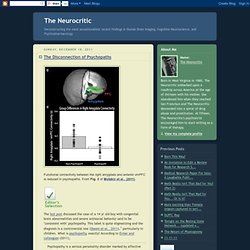
From Fig. 2 of Motzkin et al., (2011). The last post discussed the case of a 14 yr old boy with congenital brain abnormalities and severe antisocial behavior said to be "consistent with" psychopathy. This label is quite stigmatizing and the diagnosis is a controversial one (Skeem et al., 2011),1 particularly in children. Who’s in Charge Inside Your Head? Former Hostage Shane Bauer Investigates Solitary Confinement. Solitary in Iran Nearly Broke Me. Then I Went Inside America's Prisons.
Photograph by James West.

IT'S BEEN SEVEN MONTHS since I've been inside a prison cell. Kony 2012 and the tools of propaganda & advertising. Theodore Roszak, 1933-2011 - Cult of Information (complete) - Thinking Allowed w/ Jeffrey Mishlove. RSA Animate - The Truth About Dishonesty. RSA Animate - The Divided Brain. Untitled. Power of Pentatonic Scale - Demonstration by Bobby McFerrin. Infographic: The Map Of Truth And Deception. Pamela Meyer: How to spot a liar. Welcome to the DMT-Nexus.
Microsoft Word - BLANK COVER PAGE.doc - kahan_paper_cultural_cognition_of_scientific_consesus.pdf. Yale Scientific Magazine – Cultural Cognition and Scientific Consensus. For years, the U.S.
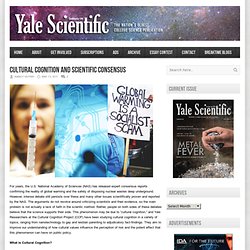
National Academy of Sciences (NAS) has released expert consensus reports confirming the reality of global warming and the safety of disposing nuclear wastes deep underground. However, intense debate still persists over these and many other issues scientifically proven and reported by the NAS. The arguments do not revolve around criticizing scientists and their evidence, so the main problem is not actually a lack of faith in the scientic method.
Rather, people on both sides of these debates believe that the science supports their side. There Is Only Awe. Julian Jaynes, a psychologist at Princeton, had little patience for his colleagues, who spent hours in the lab doing “petty, petty humdrum things.”
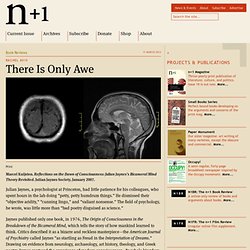
He dismissed their “objective aridity,” “cunning lingo,” and “valiant nonsense.” The field of psychology, he wrote, was little more than “bad poetry disguised as science.” Enter The Void. Exploding head syndrome. Exploding head syndrome (EHS) is a form of hypnagogic auditory hallucination and is a rare and relatively undocumented parasomnia event in which the subject experiences a loud bang in their head similar to a bomb exploding, a gun going off, a clash of cymbals, ringing, an earthquake, or any other form of loud, indecipherable noise that seems to originate from inside the head.
This noise usually happens at the onset of sleep or within an hour or two of falling asleep, but is not necessarily the result of a dream.[1] Although the sound is perceived as extremely loud, it is usually not accompanied by pain. Attacks appear to change in number over time, with several attacks happening in a space of days or weeks, followed by months of remission. Sufferers often feel a sense of fear and anxiety before and after an attack, accompanied by elevated heart rate.
Causes[edit] Related phenomena[edit] These loud noises are a common feature of out-of-body experiences. Symptoms[edit] Sleep Paralysis: page 2. Sleep Paralysis as an Anomalous REM and Dreaming: A major distinction of sleep states, for close to a half century, has been accepted between REM and NREM sleep (Aserinsky & Kleitman, 1953; Jouvet, 1967).

REM periods are characterized by desynchronized cortical characterized by low-voltage fast EEG patterns with synchronized hippocampal activity characterized by slow (4-8 Hz) theta activity (e.g., Culebras, 1994). It is also widely accepted that dreaming is more common and more vivid during REM than during NREM sleep (Dement & Kleitman, 1957). In addition to the characteristic desynchronized cortical low-voltage fast EEG activity, there are numerous physiological, behavioral, and sensory features associated with REM such as muscle atonia, gating of sensory input, rapid eye and middle ear movements, as well as heart rate and respiration changes (Carskadon & Dement, 1989; Symons, 1993). Consistently Inconsistent. Robert Kurzban's Why Everyone (Else) Is a Hypocrite: Evolution and the Modular Mind is a book about how our brains are composed of a variety of different, interacting systems.

While that premise is hardly new, many of our intuitions are still grounded in the idea of a unified, non-compartmental self. Why Everyone (Else) Is a Hypocrite takes the modular view and systematically attacks a number of ideas based on the unified view, replacing them with a theory based on the modular view. It clarifies a number of issues previously discussed on Overcoming Bias and Less Wrong, and even debunks some outright fallacious theories that we on Less Wrong have implicitly accepted.
It is quite possibly the best single book on psychology that I've read. The Science of Why We Don't Believe Science. Illustration: Jonathon Rosen "A MAN WITH A CONVICTION is a hard man to change.
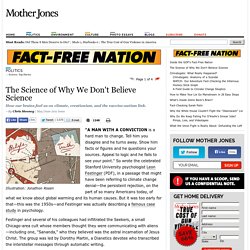
Tell him you disagree and he turns away. Show him facts or figures and he questions your sources. Simple animation to explain complex principles - Electronics. 1, aircraft radial engine 2, oval Regulation 3, sewing machines 4, Malta Cross movement - second hand movement used to control the clock.

Formal logic. Effects of Toxoplasma on Human Behavior. Jaroslav Flegr1,2 + Author Affiliations 1To whom correspondence should be addressed; tel: +420 221951821, fax: +420 224919704, e-mail: flegr@cesnet.cz.
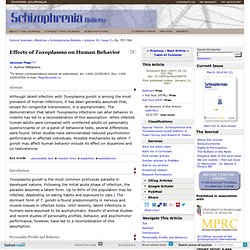
Abstract. Neuron's cobweb-like cytoskeleton (its interior scaffolding) Neuron viewed with an electron microscope. Tetrachromacy in Humans: You May Have Super Color Vision by COLOURlovers. Color Test - Online Color Challenge. Why French Kids Don't Have ADHD. RAWilson - 8 Circuits 1/7. Stephen Pinker: Language and Consciousness, Part 1 Complete: Thinking Allowed w/ J. Mishlove. Terence McKenna - Complete Program - Hallucinogens & Culture. Prometheus.pdf. Be Amazing! Less Empathy Toward Outsiders: Brain Differences Reinforce Preferences For Those In Same Social Group. An observer feels more empathy for someone in pain when that person is in the same social group, according to new research in the July 1 issue of The Journal of Neuroscience.

The study shows that perceiving others in pain activates a part of the brain associated with empathy and emotion more if the observer and the observed are the same race. The findings may show that unconscious prejudices against outside groups exist at a basic level. The study confirms an in-group bias in empathic feelings, something that has long been known but never before confirmed by neuroimaging technology. Researchers have explored group bias since the 1950s. In some studies, even people with similar backgrounds arbitrarily assigned to different groups preferred members of their own group to those of others. "Our findings have significant implications for understanding real-life social behaviors and social interactions," said Shihui Han, PhD, at Peking University in China, one of the study authors.
The Science of Why Comment Trolls Suck. Mark Matcho Everybody who's written or blogged about climate change on a prominent website (or, even worse, spoken about it on YouTube) knows the drill. Slavoj Zizek - You Are Ready to Suffer. The Intelligence Agents, by Timothy Leary, Ph.D. Karpman drama triangle. Classic drama triangle[1] The drama triangle is a psychological and social model of human interaction in transactional analysis (TA) first described by Stephen Karpman, M.D., in his 1968 article "Fairy Tales and Script Drama Analysis".[3] The drama triangle model is used in psychology and psychotherapy.[4][5] The three roles[edit] The model posits three habitual psychological roles (or roleplays) which people often take in a situation: Of these, the rescuer is the least obvious role.